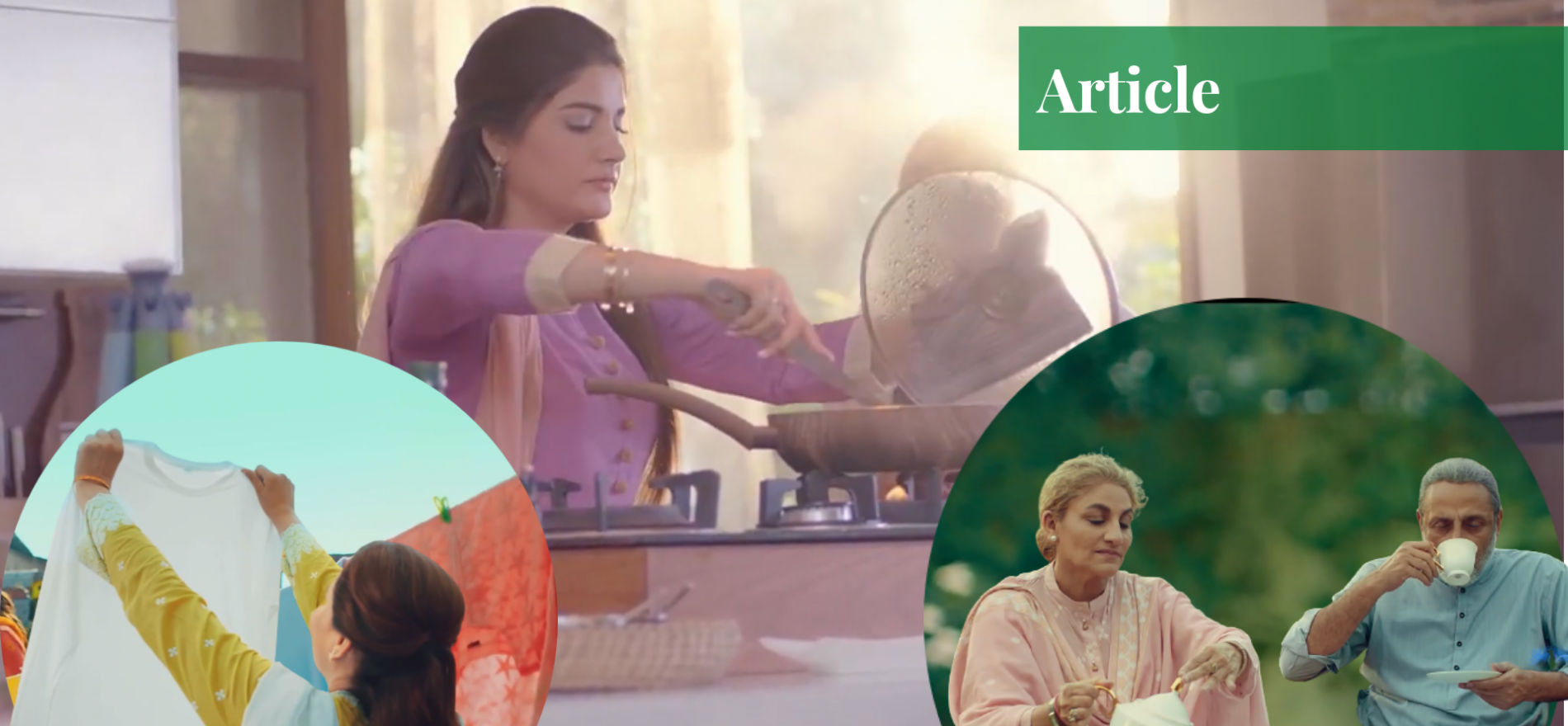Ms Arfah Zia is pursuing an MS degree in Development Studies from NUST. She also has a Bachelor of Social Science with a major in Anthropology from Bahria University, Islamabad.
Introduction
Advertising is one of the most influential ways to promote products by targeting a specific audience. It is a visual representation of persuading customers to purchase products. There are multiple ways of marketing products, one of them is the inclusion of gender in advertisements. This article will seek to elucidate how tv adverts in Pakistan not only establish gender roles but also communicate whether a product is for males or females.
The concept of masculinity and femininity is endorsed based on the cultural setting and the gender association with different products. There has been a paradigm shift in the promotion of different products, changing from gender-specific to unisex. Nevertheless, the mindset of those creating the advertisements remains the same, rigid and gender-biased.
The perception and behavior of society are molded in accordance with the content being shared. Media portrays females as subjugated beings, undermined by men. Men, on the other hand, are generally displayed as stronger and fiercer, thus promoting patriarchy.
Existing Gender Discrimination in Pakistani Adverts
Normally it is the food advertisements that are more inclined towards gender stereotyping, but even advertisements promoting non-food products are gender-biased. For instance, there is a preference for gender voiceovers. Male voices are considered more compelling and easily understood, and consequently, they are featured in an array of advertisements.
Likewise, based on gender-based product advertisements, gender roles determine the expected music, activity, and aggression level. For females, the soundtrack chosen is more subtle, with little to no aggression and activity. As for males, there is more action, with aggression and the soundtrack expected to be more intense. Thus, it insinuates that males are more robust, and the notion of women empowerment reduced to almost nothing.
Gender Roles
Head of the families in advertisements are all males and they are portrayed as stern decision-makers and key influencers of their families. The poor wives, daughters, or daughters-in-law, regardless of their occupational status, are ordered around and are expected to do the household chores.
Although “gender-neutral” roles are anticipated in food commercials, they are still male dominant and portray the domestication of females. Females are shown more vulnerable and suppressed. The media, too, features females as caretakers. They are featured in washing powder, cooking oil, toilet cleaner, and dishwashing soap advertisements as though they are the only ones responsible for utilizing such products in their “daily household chores”.
In the case of more on-screen time, females are objectified. For a women empowerment advertisement even, they are dressed in revealing attire so as to grasp the attention of the viewers. The males, on the other hand, dress modestly. There is clearly misinterpretation and underrepresentation of women on television, as they are portrayed in a clichéd manner.
Limiting Adverts
Contemporary media promotes gender stereotyping in commercials by fabricating images, consequently affecting the attitude of society. Similarly, gender identities are constructed by media, and hence stereotyping these identities limits perceptions of human capabilities. Women characters are defined as being passive and dependent.
The media makes use of females’ bodily charms for physical fitness products, cosmetics, etcetera. Where there is no need for appearance, the media unnecessarily includes female acts as a magnetizing element of the advertisement. Pakistani media tends to show young girls making scrumptious meals and being awarded for that, not considering how this contributes to the already ill-mindset of the males in our society.
Moreover, highlighting the infamous fairness cream advertisements, there are very high beauty standards in our society. A female is expected to be light-skinned and look a certain way to conform to society’s criteria. Males are also subjected to oppressive stereotypes and confront false body images. It is being recurrently shown in commercials how successful and entrepreneurial men are in their careers.
The pressures by the society that have been molded by TV commercials prove how unreasonable gender stereotypes are for men as well. They are expected to be successful, decisive, confident, and mature. Along with these particular skills they must possess good management skills and be logical. In short, these are characteristics expected of an “ideal man”.
In the case that advertisements show men looking after the house and helping their partner with domestic chores, such male roles are heavily attacked with negative criticism and questions regarding their manliness. Unfortunately, the media only shows what is culturally accepted by society, nothing more than the recognized status quo of gender roles.
Conclusion
Gender roles have been woven into our culture and so stereotypes are influenced by society. The expectations that are being portrayed by media put pressure on both males and females. The consideration that it actually affects the lives of people is forgotten. Men are expected to be strong and composed, devoid of any emotion whatsoever as it undermines their macho image. This is an unnatural demand as tears are a natural expression of grief.
Females are categorized and stereotyped as homemakers in spite of their professions. For the purpose of marketing products, women are objectified by the media. Therefore, it proves that the media representation in Pakistan favors the traditional gender stereotyping patterns, the patriarchal view.
If you want to submit your articles and/or research papers, please check the Submissions page.
The views and opinions expressed in this article/paper are the author’s own and do not necessarily reflect the editorial position of Paradigm Shift.



















